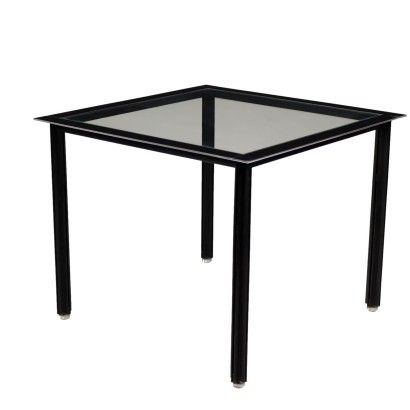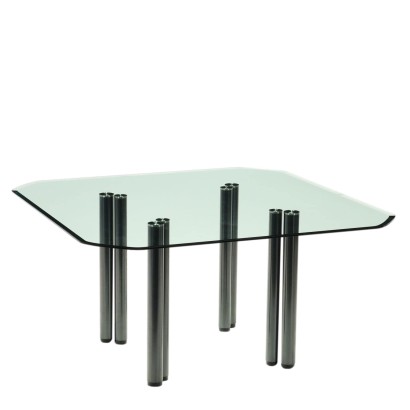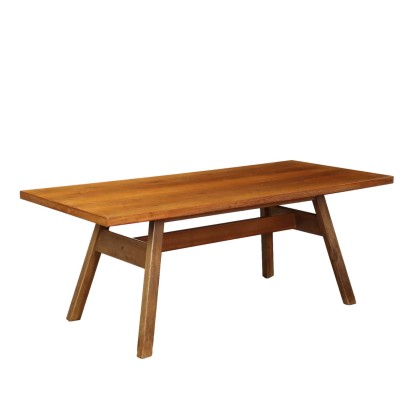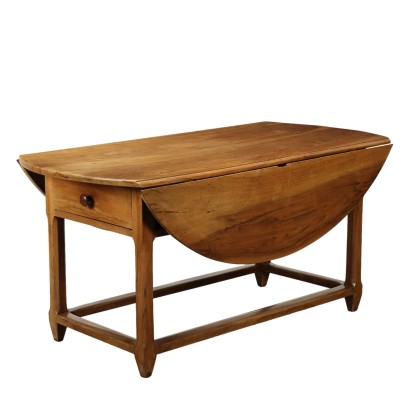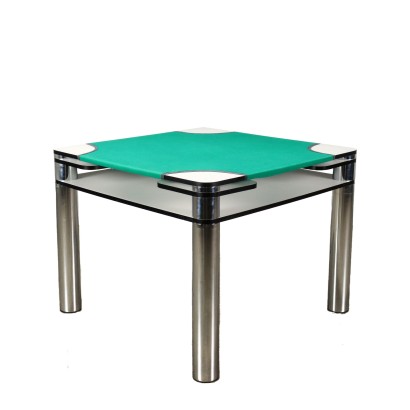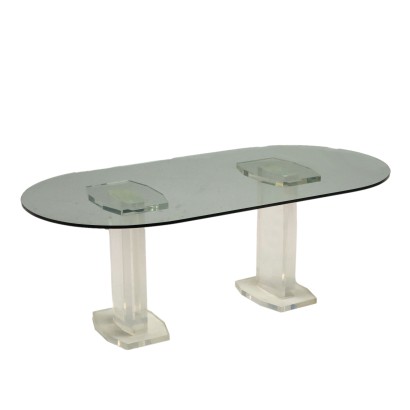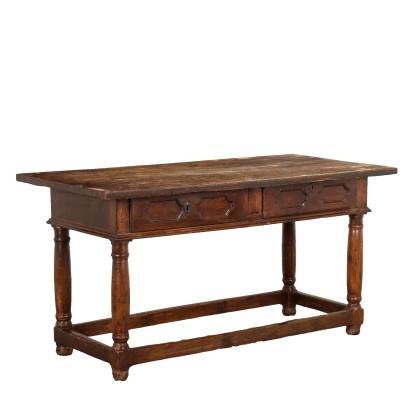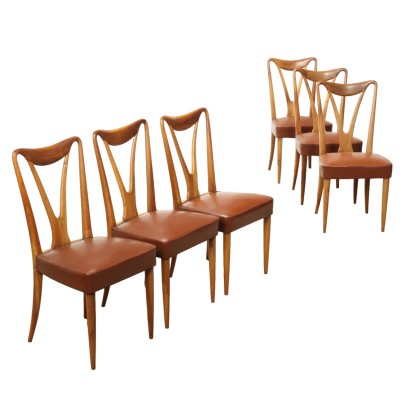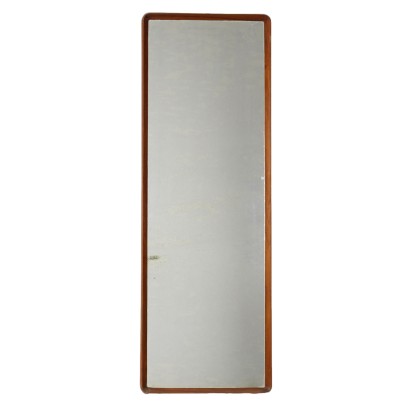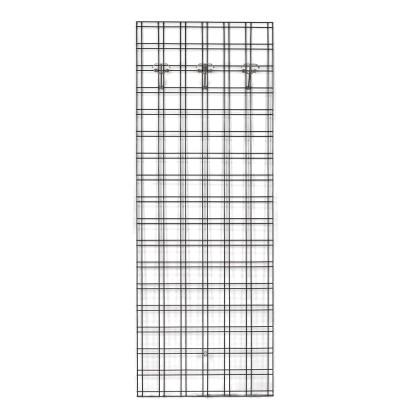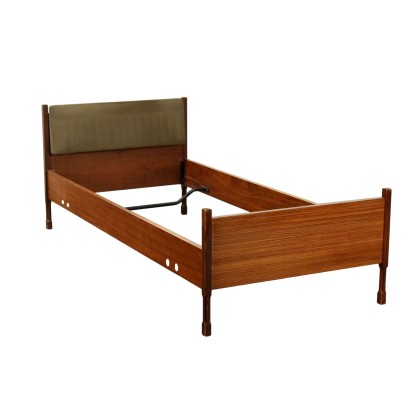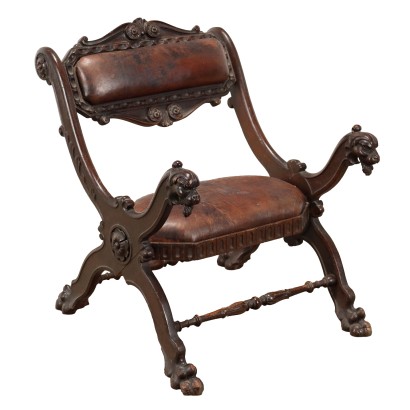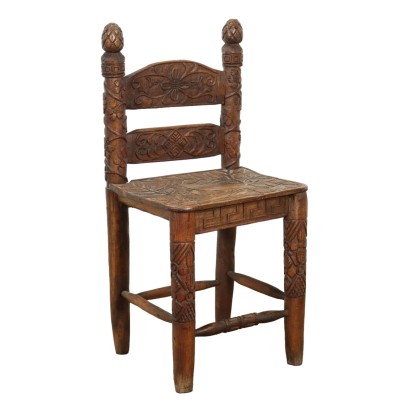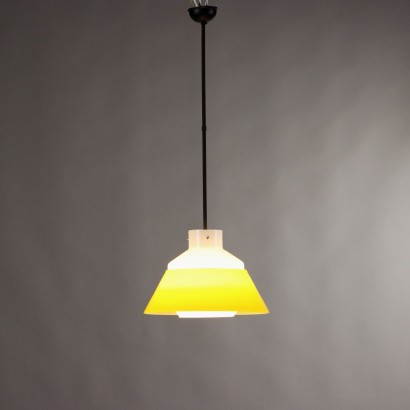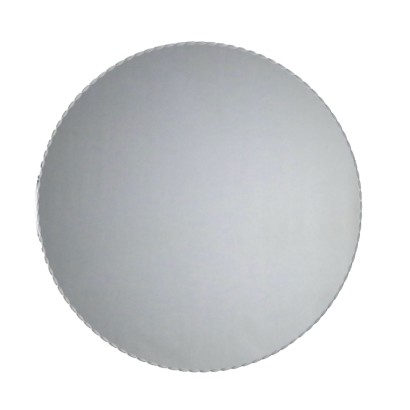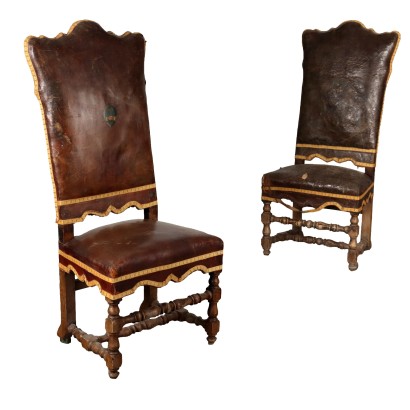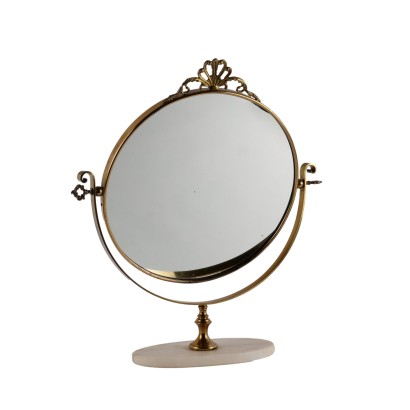Vintage Table Fasce Cromate L. Caccia Dominioni 1960s
Features
Designer: Luigi Caccia Dominioni
Production: Azucena
Model: Fasce Cromate
Time: 1960s
Production country: Milano, Italy
Material: Chromed Metal , Metallic Enamelled , Glass
Description
Table; enamelled metal structure, chromed metal, glass top.
Product Condition:
Product in good condition, shows small signs of wear. We try to present the real state as fully as possible with photos. If some details are not clear from the photos, what is reported in the description will prevail.
Dimensions (cm):
Height: 72
Width: 90
Depth: 90
Additional Information
Designer: Luigi Caccia Dominioni
Luigi Caccia Dominioni was born in Milan in 1913. He completed the entire cycle of studies, up to the Liceo Classico, at the Istituto Leone XIII in Milan, run by the Jesuits. In 1931 he enrolled in the Faculty of Architecture at the Milan Polytechnic. He graduated in 1936 and obtained the professional qualification in Venice. In 1936, with the brothers Livio and Piergiacomo Castiglioni, he opened a professional studio. He did his military service from 1939 to 1943, but refused to join the Social Republic of Salò and had to go to Switzerland. From 1945 he resumed his activity as an architect, first with his colleague Castiglioni, then, from 1946, with his own professional studio. In 1947 he dedicated himself to the production (Azucena) of furniture and design objects with the architect Ignazio Gardella. He mainly works on buildings in Milan and its province. He moved to the Principality of Monaco in 1975, where he built the Parc Saint Roman skyscraper.Find out more about Luigi Caccia Dominioni with our insights:
FineArt: Lamp 'LTE10'
Production: Azucena
That of the Azucena is a story born from the dialogue between producer, architect, artisans and customers. It all began in 1947, when a group of young Milanese - Luigi Caccia Dominioni, Corrado Corradi Dell'Acqua, Ignazio Gardella, Maria Teresa and Franca Tosi - decided to start the production of furniture designed by some of them in order to have a repertoire of ready-made furnishings, from sofas to handles, from tables to doorstops, for the homes they are planning. They are experimental furniture and objects that modify custom, contemplating the use without preconceptions of new materials, often combined with traditional ones in a completely surprising way. Even the realization is laborious and complex because their components are many and can come indifferently from industry or crafts. The lacquer, the polished chromed brass, the crystal reveal a constant search for luminosity, brilliance, transparencies, in materials as well as in finishes and colors, to escape from a conventional severe opacity. The furnishings are often called prosaically (Funnel, Boccia, Chrome bands, Ventola, Toro) to indicate, in a synthetic organicistic vision, a form, a constitutive principle; in other cases the names are taken from the toponym (Arenzano, Bordighera, Sant'Ambrogio or San Siro) used to designate the specific architecture that originally contained them and justified their design. At the base, therefore, of every single Azucena piece there is a particular architectural condition that it continues to reverberate, reproducing the echo of a reason for being.Time: 1960s
1960sMaterial:
Chromed Metal
Metallic Enamelled
Glass
Other customers have searched:
Tavoli modernariato, tavolo modernariato, tavolo anni '70, tavolo anni '40, tavolo anni '30, tavolo anni '60, tavolo anni '50, tavolo design, scrivania, scrittoio..
Approfondimenti
Se ti interessano tavoli di modernariato, tavolini, tavolini di design, ma anche scrivanie, scrittoi e consolle dai un'occhiata ai nostri approfondimenti sul blog...
From the Sixties to the Sixteenth Century – From the Sixteenth Century to the Sixties
Sedute design
Le sedute e la nascita del design
Sacco - la poltrona trasformista
Valigia - la lampada da viaggio
Pistillino - la natura che incontra il design
Eames lounge chair
Tizio by Artemide - l'equilibrio del movimento
Sui tavoli:
Lc6: equipaggiamento moderno e funzionale per la vita domestica
Segmented, un imponente tavolo da ufficio by Charles e Ray Eames
Tavolo 230/5: l'esaltazione del concetto
Il Neobarocco in un grande tavolo dell'800
Il Tavolo a fratino
Sui tavolini:
Corner MiX n. 5: un abbinamento con un tavolino di modernariato
Il tavolino di Gae Aulenti, una icona del design Il taovlino più eccentrico deli anni '50: Ragno
Breve storia dei tavolini
Un tavolino impero lombardo: segno di egemonia politica
Il tavolino da gioco, questo sconosciuto
Il dizionario dell'antiquariato – tavolino a Commesso
...e alle presentazioni su FineArt
Tavoli modernariato e design:
Archivio Borsani, patrimonio di memorie e saperi
Tavolo anni '40 ABV
Tavolo Mario Vender Anni '60
Tavolo anni '50 ABV
Tavolo '522' Gianfranco Frattini per Bernini
Tavolo 'Barium' Luciano Frigerio
Tavolo anni '50, Manifattura Italiana
Tavoli antichi:
Tavolo campionario lapideo, Roma, Opificio Raffaelli
Tavolo a vela, attribuibile a Luigi e Angiolo Falcini
Tavolo attribuibile a Luigi e Angiolo Falcini
Gueridon, Regno delle Due Sicilie, primo quarto XIX secolo
Scrittoi e scrivanie:
Scrivania Anni '50
Scrittoio, Marco Calestrini, Firenze, ultimo quarto del XVIII secolo
Scrittoio, Antonio Mascarone, inizi XIX secolo
Scrittoio, Arthur Blain, Liverpool 1840 ca.
Scrittoio a dorso d'asino, Piacenza, metà XVIII secolo
Consolle e tavoli parietali:
Consolle anni '50, manifattura italiana
Consolle a pastiglia
Tavolo parietale, Firenze 1780-1785ca.
Consolle inglese, metà XIX secolo
Consolle parietale
Coppia di consolle in pietre laviche
Tavolini modernariato:
Tavolino anni '50
Tavolino anni '40 ABV
Tavolino anni '60
Tavolini antichi:
Coppia di tavolini Tomaso Buzzi, attribuiti
Tavolino da gioco, Bottega Giuseppe Maggiolini, inizi XIX secolo
Tavolino piano commesso, Toscana, Inghilterra, Metà XIX Secolo
Tavolino Piano Commesso, Amic Hotton (attribuito a ), XIX Secolo
Approfondimenti
Se ti interessano tavoli di modernariato, tavolini, tavolini di design, ma anche scrivanie, scrittoi e consolle dai un'occhiata ai nostri approfondimenti sul blog...From the Sixties to the Sixteenth Century – From the Sixteenth Century to the Sixties
Sedute design
Le sedute e la nascita del design
Sacco - la poltrona trasformista
Valigia - la lampada da viaggio
Pistillino - la natura che incontra il design
Eames lounge chair
Tizio by Artemide - l'equilibrio del movimento
Sui tavoli:
Lc6: equipaggiamento moderno e funzionale per la vita domestica
Segmented, un imponente tavolo da ufficio by Charles e Ray Eames
Tavolo 230/5: l'esaltazione del concetto
Il Neobarocco in un grande tavolo dell'800
Il Tavolo a fratino
Sui tavolini:
Corner MiX n. 5: un abbinamento con un tavolino di modernariato
Il tavolino di Gae Aulenti, una icona del design Il taovlino più eccentrico deli anni '50: Ragno
Breve storia dei tavolini
Un tavolino impero lombardo: segno di egemonia politica
Il tavolino da gioco, questo sconosciuto
Il dizionario dell'antiquariato – tavolino a Commesso
...e alle presentazioni su FineArt
Tavoli modernariato e design:
Archivio Borsani, patrimonio di memorie e saperi
Tavolo anni '40 ABV
Tavolo Mario Vender Anni '60
Tavolo anni '50 ABV
Tavolo '522' Gianfranco Frattini per Bernini
Tavolo 'Barium' Luciano Frigerio
Tavolo anni '50, Manifattura Italiana
Tavoli antichi:
Tavolo campionario lapideo, Roma, Opificio Raffaelli
Tavolo a vela, attribuibile a Luigi e Angiolo Falcini
Tavolo attribuibile a Luigi e Angiolo Falcini
Gueridon, Regno delle Due Sicilie, primo quarto XIX secolo
Scrittoi e scrivanie:
Scrivania Anni '50
Scrittoio, Marco Calestrini, Firenze, ultimo quarto del XVIII secolo
Scrittoio, Antonio Mascarone, inizi XIX secolo
Scrittoio, Arthur Blain, Liverpool 1840 ca.
Scrittoio a dorso d'asino, Piacenza, metà XVIII secolo
Consolle e tavoli parietali:
Consolle anni '50, manifattura italiana
Consolle a pastiglia
Tavolo parietale, Firenze 1780-1785ca.
Consolle inglese, metà XIX secolo
Consolle parietale
Coppia di consolle in pietre laviche
Tavolini modernariato:
Tavolino anni '50
Tavolino anni '40 ABV
Tavolino anni '60
Tavolini antichi:
Coppia di tavolini Tomaso Buzzi, attribuiti
Tavolino da gioco, Bottega Giuseppe Maggiolini, inizi XIX secolo
Tavolino piano commesso, Toscana, Inghilterra, Metà XIX Secolo
Tavolino Piano Commesso, Amic Hotton (attribuito a ), XIX Secolo
Product availability
The product can be seen at Cambiago
Immediate availability
Ready for delivery within 2 working days from ordering the product.
Alternative proposals
It could also interest you



